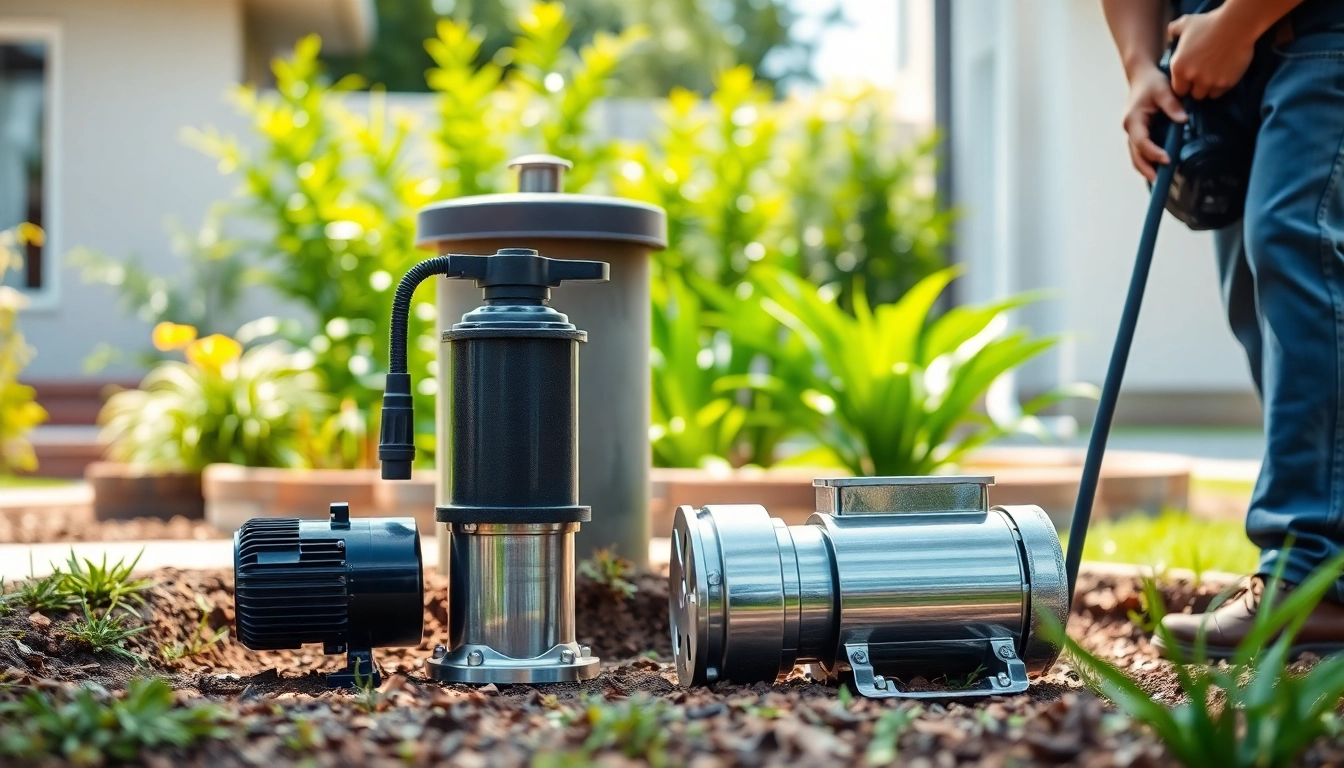Understanding Well Pump Replacement
What is Well Pump Replacement?
A well pump replacement involves removing an old, faulty pump and installing a new one to restore or upgrade the supply of water from a private well. This process is crucial for homes that rely on well water, ensuring continual access to water for daily activities such as drinking, cooking, and bathing. Well pumps can wear out or fail due to a variety of factors, including age, sediment buildup, or electrical issues. The replacement process typically requires knowledge of plumbing and electrical work, making it usually best handled by professionals, though some homeowners may choose to undertake this project themselves.
Signs You Need a Well Pump Replacement
Being able to identify the signs that indicate your well pump may need replacement is essential for maintaining a reliable water supply. Here are some common signs:
- Low Water Pressure: A sudden decrease in water pressure can signal that the well pump is struggling to function properly.
- No Water Flow: If you find that there’s no water coming from your taps, the pump may have failed completely.
- Unusual Noises: Grinding or rumbling sounds can indicate that the pump’s motor or other components may be damaged.
- Frequent Cycling: If the pump runs continuously or turns on and off rapidly, it could be a sign of malfunction.
- Water Quality Issues: Discolored or foul-smelling water can indicate problems within the pump or well.
The Importance of Timely Replacement
Timely well pump replacement is critical to ensuring a constant and reliable water supply. Delaying necessary repairs can result in further damage to the pump or the plumbing system, leading to more costly repairs in the long run. Additionally, a failing pump can compromise water quality, which may pose health risks. Proactive replacement not only saves money but can also enhance the overall efficiency and longevity of your well system.
Types of Well Pumps
Submersible vs. Jet Pumps
Understanding the different types of well pumps is essential for selecting the right one for your needs. The two most common types are submersible pumps and jet pumps.
Submersible Pumps: These pumps are designed to be submerged in water. They are highly efficient for deep wells, as they push water to the surface using a series of impellers. Submersible pumps are known for their durability and ability to handle higher pressure.
Jet Pumps: Jet pumps are typically installed above ground and use suction to draw water from the well. They are more suitable for shallow wells and can be less efficient compared to submersible pumps. However, they are easier to maintain since they are accessible without the need to haul them out of the well.
Pros and Cons of Each Type
Both submersible and jet pumps have their advantages and disadvantages:
- Submersible Pumps:
- Pros: Efficient in deep wells, quieter operation, and less prone to freezing.
- Cons: More challenging to service and replace due to being submerged.
- Jet Pumps:
- Pros: Easier access for maintenance, cost-effective for shallow wells.
- Cons: Less efficient for deep wells, may require more power.
Choosing the Right Pump for Your Needs
When deciding between a submersible or jet pump, consider factors such as the depth of your well, water demand, and the specific application of the water. For deep wells or homes that require a strong water pressure, a submersible pump is often the best choice. Conversely, for shallow wells or smaller water needs, a jet pump may suffice. Consulting with a professional can also provide valuable insights into the best option for your situation.
Cost Factors in Well Pump Replacement
Average Costs and Breakdown
The overall cost of well pump replacement can vary significantly based on several factors, such as the type of pump, the depth of the well, and labor costs. On average, homeowners can expect to pay between $3,000 and $5,000 for a complete replacement, including labor. Breakdown of costs typically includes:
- Equipment Costs: This involves the price of the new well pump, which can range from $600 to over $2,500 depending on the type and brand.
- Installation Costs: Professional installation fees usually fall between $1,000 and $2,500, depending on the local rate and complexity of the job.
- Permits and Inspections: Local regulations may require permits for well work, adding to the overall cost.
DIY vs. Professional Installation Expenses
While some homeowners may attempt a DIY approach to save money, it’s essential to account for the potential hidden costs and risks. A DIY installation can lead to:
- Incorrect installation, which may result in further damage.
- Increased time and labor costs if complications arise.
Hiring a professional ensures not only proper installation but also adherence to local codes and regulations, minimizing future issues with your well system.
Hidden Costs to Consider
In addition to the direct costs of pump replacement, homeowners should be aware of potential hidden costs that could arise:
- Repairs to Existing Infrastructure: If there are pre-existing issues with plumbing or electrical components, these may need to be addressed during replacement.
- Water Quality Testing: After installation, it might be necessary to check water quality to ensure safety.
Steps to Replace a Well Pump
Preparation for Replacement
Proper preparation is crucial before starting the replacement process. Follow these steps:
- Gather Tools and Equipment: Ensure you have all necessary tools on hand, including wrenches, screwdrivers, safety gear, and any accessories needed for the new pump.
- Shut Off Power Supply: Disconnect the power to avoid any electrical hazards during the process.
- Check Local Regulations: Confirm if permits are needed for your well pump replacement and obtain them accordingly.
Removing the Old Pump Safely
When it comes time to remove the old pump, proceed with caution:
- Disconnect Plumbing: Carefully detach the plumbing fittings connected to the pump.
- Extract the Pump: Depending on the pump type, this may involve pulling it directly from the well or accessing it through a well casing.
- Inspect Existing Components: Evaluate casing and piping for wear or damage, replacing any compromised parts.
Installing the New Pump Effectively
Once the old pump is removed, follow these guidelines for a successful installation:
- Position the New Pump Correctly: Ensure that the pump is positioned securely in the well and aligned with existing piping.
- Connect Plumbing: Reinstall plumbing connections, ensuring all fittings are tight to avoid leaks.
- Power Up: Once everything is reconnected, turn the power back on to the system, and monitor for any issues.
Maintaining Your Well Pump Post-Replacement
Routine Maintenance Checks
A routine maintenance schedule is essential to ensure your new pump remains operational and efficient. Regular checks should include:
- Inspecting Electrical Connections: Periodically check wiring and connections for signs of corrosion or wear.
- Checking Water Quality: Address any changes in water color, smell, or taste promptly.
- Monitoring Performance: Take note of any changes in water pressure or flow rates.
Signs of Potential Issues
Understanding what to look out for can help you catch potential problems before they become severe:
- Frequent switch cycling.
- Unusual noises from the pump or well system.
- Signs of water leaks near plumbing fixtures.
When to Call a Professional for Help
If you notice any persistent issues beyond basic maintenance or suspect significant problems, it’s best to consult a professional. Attempting to fix complex issues without the proper expertise can lead to costly mistakes or safety hazards.
Overall, the process of well pump replacement can be multifaceted, involving careful planning, execution, and ongoing maintenance. By understanding the intricacies of your well system, you can ensure a reliable water supply for your needs.



